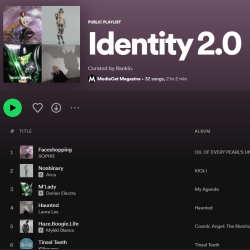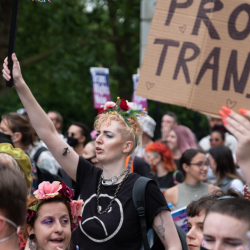What is identity? Your identity is made up of many factors, some which relate specifically to you and other predetermined factors, set before you ever graced the earth. Race, gender, sexuality, family wealth, geographical location, religion, among many others. In these cases, the way that society perceives the boxes you are allocated and how they intersect will determine how you are treated and the external cues that will influence your self-perception.
At Neuro-Insight we collect subconscious brain data through our patented technology, Steady State Typography (SST). This allows us to measure second-by-second responses bypassing the conscious brain and getting to the root of human emotion and decision making. We report on a series of metrics — including attention, emotion, relevance, and most importantly long-term memory encoding, which has been proven to directly correlate with future action, decision making and behaviour change. Neuro-Insights research has shown that differences in identity are not only reflected consciously but also effect how the subconscious brain responds to the world.
Identity is a vast and complex topic
In this piece we will mainly explore the subject of gender through the lens of the subconscious, highlighting the importance of how our societal context influences responses to advertising.
Girls, Girls, Girls‘, ‘Be a lady they said’ campaign explored the preconceived ideas of gender norms. When watching this powerful video women responded with high levels of memory, relevance, and emotional arousal, showing that the messages of being instructed on how to look, feel, and behave felt particularly pertinent. However, male viewers responded with low levels of brain response overall, with average responses being 30% lower for memory, and 27% lower for personal relevance.
Women found the messages within this video relevant and therefore important enough to encode into long-term memory alongside a negative emotion. Whereas men found the messages irrelevant, and therefore the messages weren’t impactful. This campaign demonstrates how societal narratives impact specific groups but not others, and most importantly, if gendered associations are embedded too deeply this can hinder immediate change.
In another study we found that “male” voice assistance (VAs) were more relatable and memorable to male listeners than female VAs. Men tended to superficially enjoy listening to the female VAs but found the information they gave less memorable. Conversely, women found female sounding VAs more memorable. Interestingly, even when not splitting by gender, male VAs elicited a stronger brain response when replying to information requests and commands from the listener.
Whereas female VAs only elicited a stronger brain response than their male counter parts when they were delivering information related to entertainment. This brain response mirrors traditional gender roles within our western society, showing how deeply entrenched the perception of a gendered voice can be.
In the 2020 Starbucks campaign showing the story of a transgender man we saw that the younger viewers had a markedly more positive emotional response to the reveal of his name, alongside a stronger memory response, showing that younger viewers perceived this as important information. Conversely, the older audience did not find this reveal to be important enough to encode the information and showed a dislike to the outcome. This indicates that the shift towards a more gender fluid society is slowly having an impact on our subconscious, with younger people experiencing more positive responses to genders outside of the binary and the spectrum of identity evolving to become more diverse.
The magnitude of identity as a topic is quite overwhelming, here we have looked at a tiny snapshot of self-identity through the subconscious lens. As the world we live in evolves and expands, it is increasingly important to reflect on all elements of identity due to the immense complexity of our subconscious.
With the average person seeing approximately 10,000 adverts a day it’s important to recognise that, within the advertising space, we can shape the cultural narrative of the society we’re in. We can include more diverse characters and narratives to represent people across the spectrum of identity, feeding into the subconscious cues we all receive daily, and normalising versions of identity beyond the traditional.
Featured image: Every name’s a story / Starbucks



































